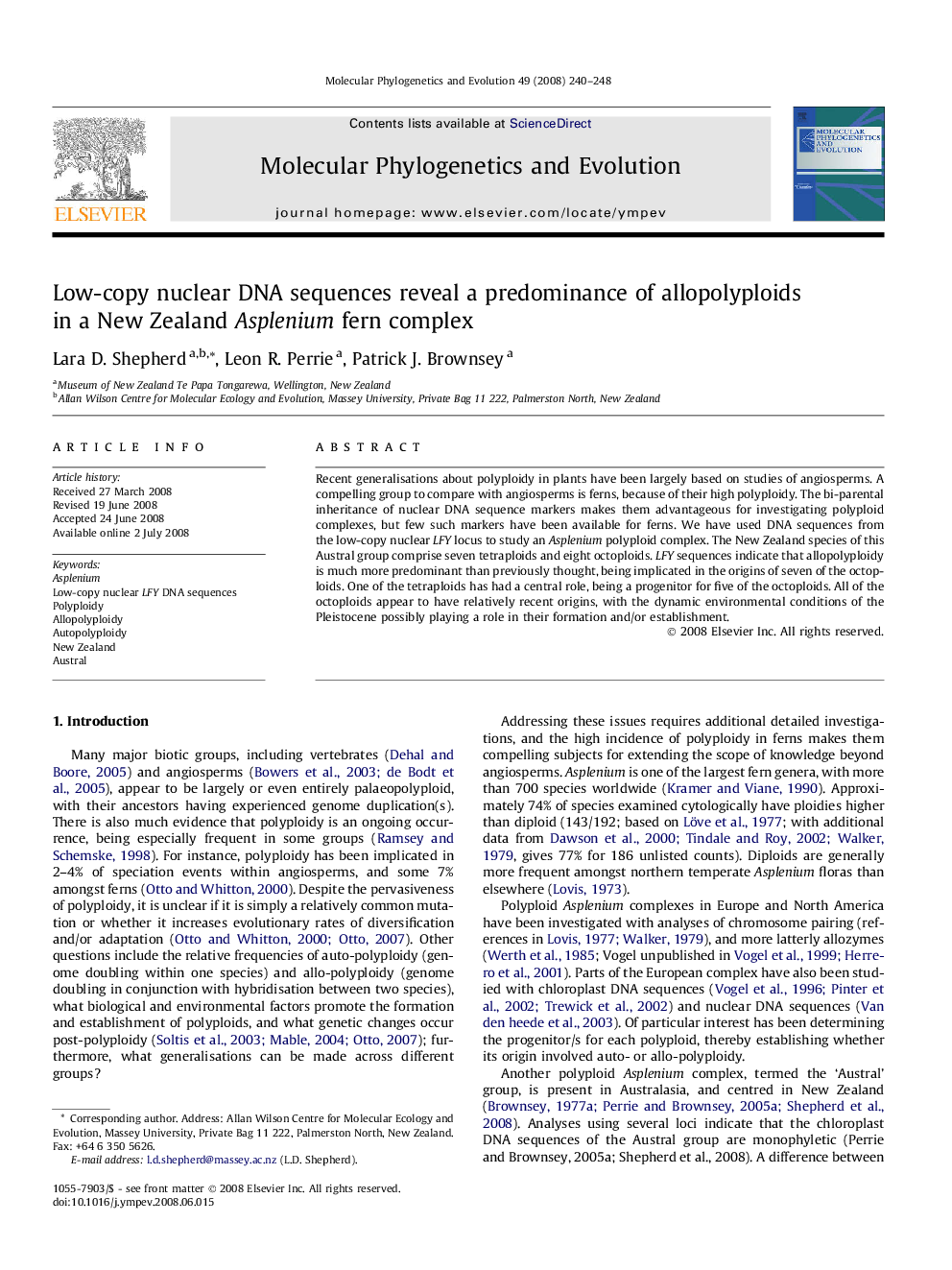| Article ID | Journal | Published Year | Pages | File Type |
|---|---|---|---|---|
| 2835043 | Molecular Phylogenetics and Evolution | 2008 | 9 Pages |
Recent generalisations about polyploidy in plants have been largely based on studies of angiosperms. A compelling group to compare with angiosperms is ferns, because of their high polyploidy. The bi-parental inheritance of nuclear DNA sequence markers makes them advantageous for investigating polyploid complexes, but few such markers have been available for ferns. We have used DNA sequences from the low-copy nuclear LFY locus to study an Asplenium polyploid complex. The New Zealand species of this Austral group comprise seven tetraploids and eight octoploids. LFY sequences indicate that allopolyploidy is much more predominant than previously thought, being implicated in the origins of seven of the octoploids. One of the tetraploids has had a central role, being a progenitor for five of the octoploids. All of the octoploids appear to have relatively recent origins, with the dynamic environmental conditions of the Pleistocene possibly playing a role in their formation and/or establishment.
